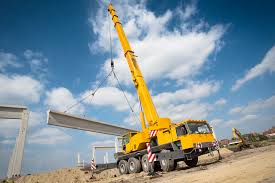Directional drilling, a trenchless technology, revolutionises how we navigate underground projects. This method minimises disruption to the surface, making it a sustainable and efficient alternative to traditional excavation. But what exactly makes this approach possible? Let’s delve into the fascinating world of directional drilling equipment, focusing on the tools employed to bring your project to life.
The Core of Directional Drilling: The Drill Rig
The drill rig serves as the workhorse of any directional drilling operation. Directional drilling utilises a modern fleet of rigs specifically designed for this purpose. These rigs can be broadly categorised into two types:
- Vertical Drill Rigs: These rigs are used for the initial, vertical portion of the bore. They establish a starting point and pilot hole before transitioning to the directional phase.
- Horizontal Directional Drilling (HDD) Rigs: These specialised rigs take over once the pilot hole is established. Equipped with sophisticated guidance systems and powerful drilling mechanisms, they navigate the designated path underground.
HDD rigs boast several key features:
- Rotating Drill Pipe: This long, hollow pipe acts as the conduit for drilling tools and drilling fluid. It features a swivel joint at the top that allows for rotation while maintaining a stable connection to the rig.
- Drill Bit: Attached to the bottom of the drill pipe, the drill bit penetrates the ground. Directional drilling employs various types of drill bits, each optimized for specific soil conditions and project requirements.
- Mud Motor: This downhole tool provides the rotational force needed to power the drill bit. Mud motors are powered by the pressurised drilling fluid pumped through the drill pipe.
- Guidance System: This crucial component ensures precise directional control. Directional drilling utilises state-of-the-art guidance systems that combine surface tracking with downhole sensors to maintain the desired trajectory throughout the drilling process.
- Drilling Fluid System: A vital element, the drilling fluid system circulates mud or a special fluid mixture through the drill pipe. This fluid serves several purposes: cooling the drill bit, lubricating the drill string, transporting cuttings to the surface, and maintaining borehole stability.
Additional Equipment for a Successful Project
Directional drilling equipment extends beyond the core drill rig to encompass a range of supporting equipment, each playing a critical role:
- Locating Equipment: Precise tracking of the drill bit’s location underground is essential. Directional drilling utilises advanced locating equipment that transmits real-time data on the drill bit’s position and direction, allowing for continuous course correction if needed.
- Vacuum Excavation Equipment: For minimising surface disruption even further, vacuum excavation equipment might be employed. This technique uses a high-powered vacuum to remove soil from the entry and exit points of the bore, minimizing the need for traditional excavation.
- Support Equipment: A variety of support equipment ensures a smooth operation. This may include water trucks for dust suppression, mud pumps for maintaining fluid circulation, and compressors for powering pneumatic tools.
Conclusion
The world of directional drilling equipment showcases a fascinating intersection of engineering and innovation. By utilizing a modern fleet of rigs, advanced guidance systems, and supporting equipment, ensures the successful execution of various underground projects.




